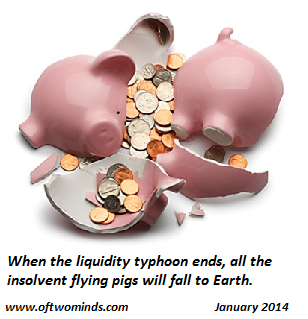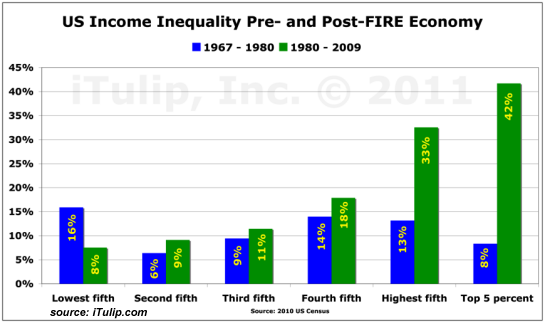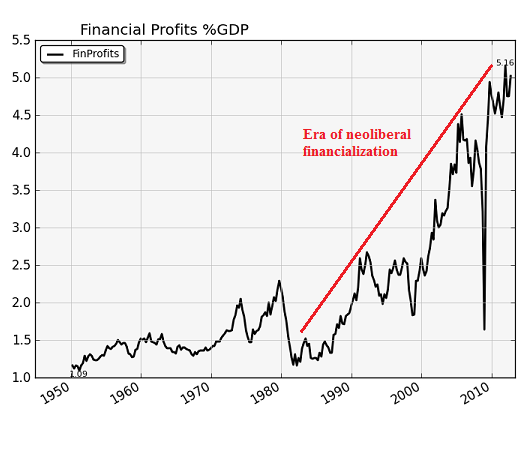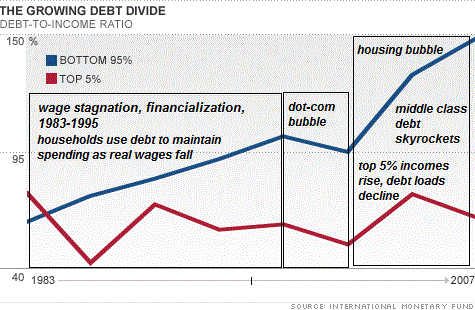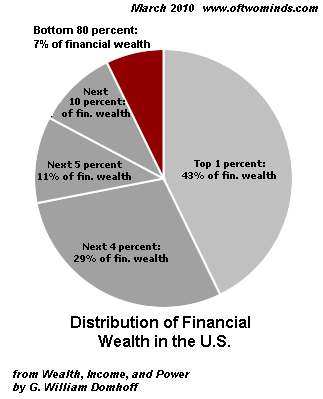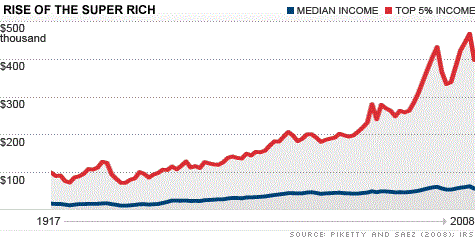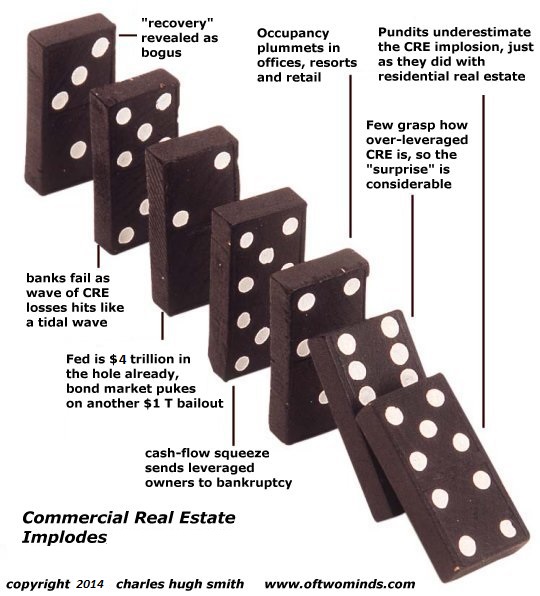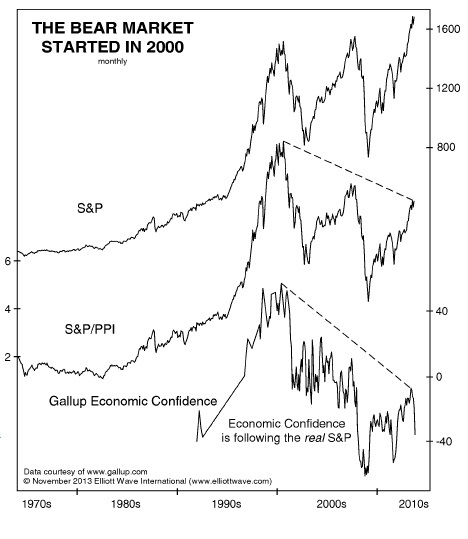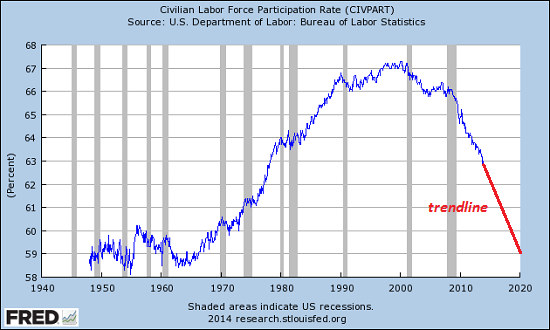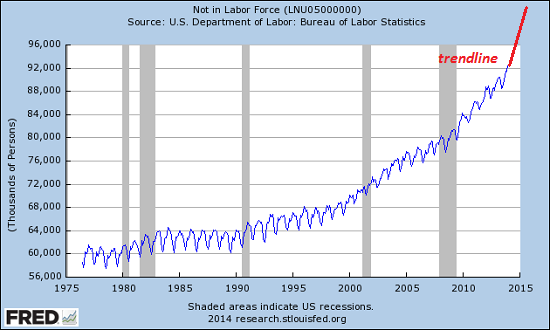Theft Is Deflationary--Especially the Crony-Capitalist/State Kind
Monopoly power in all its forms--in our system, crony capitalism and its partner, the neofeudal state--enables theft on a systemic scale.
If a monopoly forces its customers to pay more for low-quality goods and services because they have no choice, how is that not theft?
If the Mafia raises the price of "protection" on small businesses (another case of monopoly and no other choice), how is that extortion not theft?
When a local government raises junk fees to fund its cronies' excessive (i.e. non-market-rate) salaries and pensions, how is that monopoly power to extort more money from those with no other choice any different from Mafia extortion/theft?
If a pharmaceutical company extends a patent on a costly medication by changing the dosage slightly, how is that not theft via regulatory capture? If a government contractor charges the Pentagon $1,000 for a hammer (all those overhead charges, tsk-tsk--lobbying corrupt politicos costs a lot, you know), how is that not theft of taxpayers' money?
When the Federal Reserve drops the yield on savings to near-zero to funnel all that stolen wealth to its cronies on Wall Street, how is that not theft?
Monopoly power in all its forms--in our system, crony capitalism and its partner, the neofeudal state--enables theft on a systemic scale. When crony capitalism and the state are essentially one system, the propaganda organs of the state and mainstream corporate media combine to persuade the stripmined populace that their theft is not theft, it's "capitalism and democracy at work." This is known as The Big Lie. What we have is systemic theft, predation and exploitation.
Calling things what they really are would upset the apple cart of systemic exploitation.Let's Call Things What They Really Are in 2014 (January 15, 2014)
Correspondent Jeff W. explains that all this systemic theft is inherently deflationary:
All forms of stealing are deflationary. Stealing cuts into the average citizen’s disposable income, it reduces how much he can buy. Because there are now fewer dollars chasing more goods, deflation is the inevitable result. Stealing is actually worse than a zero-sum game. Society loses more than the thief takes. In addition to losses from theft, a victim often has to spend more on security measures. Theft also has a chilling effect on capital investment and commerce in general.
Consider how many different kinds of theft the American citizen is exposed to: street crime, sickcare industry ripoffs, legal system ripoffs including huge fines for traffic violations, high taxes, interest earnings on his savings that amount to ZIRP, a corporatist state determined to suppress his wages by any means necessary, unending victimization at the hands of predators enabled and protected by the state. If he owns a small business, he has to deal with a corrupt regulatory state, higher taxes, and an enlarged menagerie of predators. Today there are thieves everywhere.
So one big deflation trend is theft. As theft increases, deflation increases. As society collapses and thieves start roaming freely all over the landscape, a deflationary collapse can be expected—absent a determined and persistent campaign of money printing.
Exhibit A for the case that stealing is deflationary is the Dark Ages.Stealing was rampant in the Dark Ages. How did people react to that? By “going medieval.” They wore clothing that made them look poor so as to avoid attracting the attention of thieves. Their dwellings looked poor for the same reason. If they had cash, they would bury it in the ground; no one could be trusted. Unless one was an insider who could get protection from the state, no one’s property was safe.
Capital investments were much too risky, and out of the question. What were the price characteristics of the Dark Ages? Wages were low. Real estate valuations low. Prices of manufactured items (such as they were) were low. Only food was expensive. People can cut back on clothing and shelter, but there is a limit to how much they can cut back on food. In the Dark Ages, people really hunkered down and just focused on basic survival.
Exhibit B is Detroit. Detroit for many years has been a high crime area, i.e. it had lots of thieves running around. What are the price characteristics of Detroit? Wages low. Real estate valuations low. There is very little manufacturing being done inside the city limits today because of high property taxes and crime. There is also very little capital investment for the same reasons.
There is a vicious circle at work here. 1) Thieves control the government; 2) Which results in increased stealing; 3) Deflation results from that; 4) Which gives the thieves a reason to print money and give it to themselves; 5) Which enriches the thieves some more; 6) Which gives them more resources they can use to consolidate their control of the government; 7) Back to step 1.
Many people seem confused about how there could be deflation in the paper (or digital) money era. If they would recognize how much stealing is going on, and if they understood the powerful deflationary effect of stealing, then perhaps they would not be so surprised to observe price decreases, particularly in wages and the prices of manufactured products.Thank you, Jeff, for explaining the causal connection between systemic theft and deflation. To all those terrified of deflation (for example, central bankers and their cronies holding trillions of dollars in phantom assets and illusory collateral), the solution is obvious: get rid of systemic theft. But since those terrified of deflation are at the top of the monopoly-power thievery pyramid, that is asking the impossible: for the thieves to relinquish their power to steal.
The Nearly Free University and The Emerging Economy:
The Revolution in Higher Education
Reconnecting higher education, livelihoods and the economyWith the soaring cost of higher education, has the value a college degree been turned upside down? College tuition and fees are up 1000% since 1980. Half of all recent college graduates are jobless or underemployed, revealing a deep disconnect between higher education and the job market.
It is no surprise everyone is asking: Where is the return on investment? Is the assumption that higher education returns greater prosperity no longer true? And if this is the case, how does this impact you, your children and grandchildren?
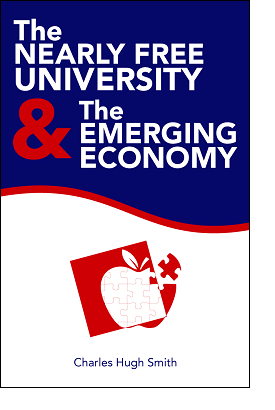
We must thoroughly understand the twin revolutions now fundamentally changing our world: The true cost of higher education and an economy that seems to re-shape itself minute to minute.
The Nearly Free University and the Emerging Economy clearly describes the underlying dynamics at work - and, more importantly, lays out a new low-cost model for higher education: how digital technology is enabling a revolution in higher education that dramatically lowers costs while expanding the opportunities for students of all ages.
The Nearly Free University and the Emerging Economy provides clarity and optimism in a period of the greatest change our educational systems and society have seen, and offers everyone the tools needed to prosper in the Emerging Economy.
Read Chapter 1/Table of Contents
print ($20) Kindle ($9.95)
Things are falling apart--that is obvious. But why are they falling apart? The reasons are complex and global. Our economy and society have structural problems that cannot be solved by adding debt to debt. We are becoming poorer, not just from financial over-reach, but from fundamental forces that are not easy to identify. We will cover the five core reasons why things are falling apart:
 1. Debt and financialization
1. Debt and financialization2. Crony capitalism
3. Diminishing returns
4. Centralization
5. Technological, financial and demographic changes in our economy
Complex systems weakened by diminishing returns collapse under their own weight and are replaced by systems that are simpler, faster and affordable. If we cling to the old ways, our system will disintegrate. If we want sustainable prosperity rather than collapse, we must embrace a new model that is Decentralized, Adaptive, Transparent and Accountable (DATA).
We are not powerless. Once we accept responsibility, we become powerful.
Read the Introduction/Table of Contents
Kindle: $9.95 print: $24
| Thank you, W. Anthony H. ($100), for your outrageously generous contribution to this site-- I am greatly honored by your steadfast support and readership. |




















